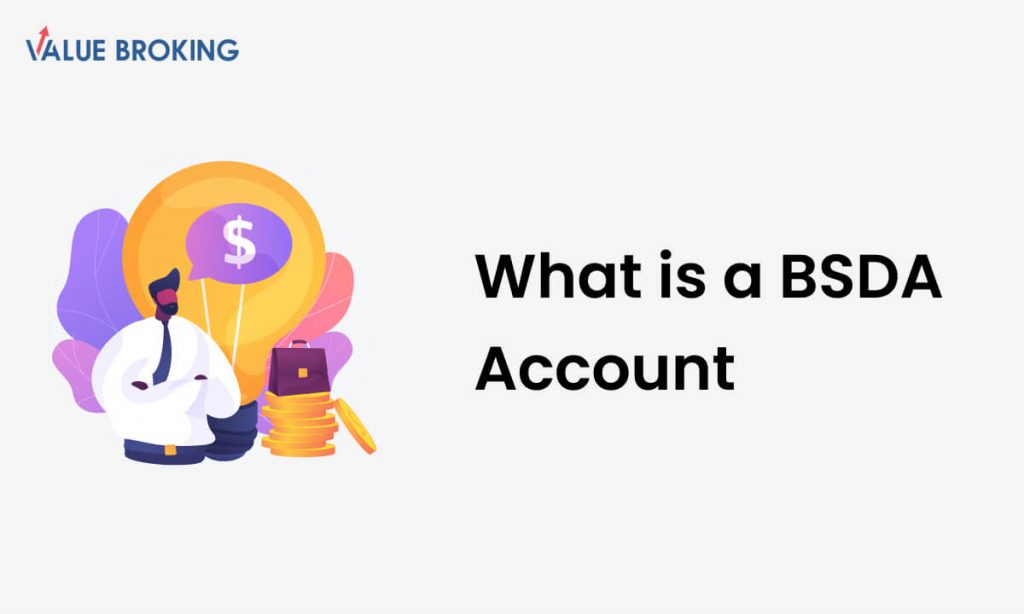All You Need to Know About BSDA

Three types of Demat accounts that are widely known are regular Demat accounts, Repatriable Demat accounts, and Non-repatriable Demat accounts. Basic Service Demat Account is a new type of Demat account which came into existence a few years ago. Let’s discuss it in detail. SEBI introduced the BSDA concept in 2012. The goal was to make Demat charges less burdensome for investors with small holdings under Rs2 lakhs. However, Demat accounts come with a slew of fees. SEBI has already prohibited charges for account opening and credits to Demat accounts. However, other charges that come with a Demat account are as follows:
- Annual maintenance expenses (AMC) are usually between Rs600 and Rs800 per year.
- Debits charged to the Demat account are per folio.
- Charges for mailing physical statements to customers.
- Expenses for physical share dematerialization and Demat.
- Additional fees include bounced checks, DIS rejections, DRF rejections, etc.
The BSDA saves the Demat account holder two significant expenses. First, the AMC has a holding slab where the holder falls based on the intervening date. Second, online statements are available to BSDA account users. Other fees, such as per-folio debits and DRF fees, will apply.
The amount of all investments in the Demat account, comprising shares, mutual funds, and ETFs, are added up to calculate the BSDA cut-off value.
Table of Contents
What is a BSDA Account?
Bsda meaning: It is commonly known as a BSDA, and BSDA means a Demat account available for small investors who don’t carry out regular investments in stocks, bonds, ETFs, mutual funds, etc. You can open and maintain a BSDA account at a lower cost. Therefore, this type of account is suitable for investors with fewer investments than a general Demat account.
SEBI introduced a BSDA in 2012. You need only one Demat account across all depositories. Investors with smaller portfolios will face no maintenance burden by using BSDAs.
The following Annual Maintenance Charges (AMCs) are for the BSDA account exclusive of GST.
- If you have a holding value of up to Rs.50,000 in your BSDA, there will be no AMC.
- For up to Rs. 50,001 to Rs 2,00,000, you will have to pay Rs.100 as AMC.
- For the above Rs. 2,00,000, you will have to pay Rs.500 AMC.
These charges differ from one stockbroker to another in India.
Benefits of BSDA Account
Here are the following benefits of BSDA in terms of cost and expenses—
- The charges for physical statements sent to customers via mail are reduced.
- There is no dematerialization charge.
- There is a lower annual maintenance charge than a general Demat account.
What are the Eligibility Criteria of BSDA?
Here are the following criteria for having a BSDA.
- You must be the account’s sole owner.
- There should not be any other Demat account other than a BSDA.
- You can hold only one Demat account under the BSDA category.
- The total value of the securities in your BSDA Demat account should not exceed Rs. 2 lakh.
- You should not be the first holder of a joint account.
Who qualifies for a BSDA Demat account?
The essential services Small investors can use a Demat Account (BSDA) to get limited services at a lower cost. Putting it in another way, the BSDA is a no-frills Demat account. Anyone can open a BSDA account and turn the current Demat account into a spare one if the conditions are in their favor, but there are two points to keep in mind. To start off, the BSDA facility is only available if the investor is the sole owner of the property. Second, BSDA does not permit joint/ shared account cases.
rnAn individual can only have one BSDA account throughout all DPs to prevent shareholdings from being split to bypass the optimum choice.
How to get BSDA status for your existing Demat account?
The SEBI has given the DPs permission to calculate the value of a holding using the time series data (NAV in the case of mutual funds). If the sum of your investments reaches the authorized limit, the DP may charge you somewhat like non-BSDA Demat accounts. However, the DP turns such accounts into BSDA accounts and charges proportionately lower expenses if the value is less than Rs50,000 or Rs2 lakhs on the billing date.
rnrn
How do I Convert My Demat Account to BSDA (Basic Service Demat Account)?
You can convert your existing Demat account into a BSDA. The regulatory body will check up with depositories. The depository will proceed further to convert the account into BSDA. You will have to pay AMC based on your holdings.
Frequently Asked Questions (FAQs)
Here are some of the following additional charges.
If the holdings in your Demat account exceed Rs. 2 lakh, then it will automatically move to Full-Service Demat Account (FSDA).
However, there can be the conversion of your BSDA account to a non-BSDA one based on the following two factors
- Your holding value crosses the threshold.
- Have a Demat Account with another stockbroker, which you use actively.
No. Only one can open or keep an account under the BSDA Category whenever the investor is the first/sole/ holder. The amount of the investments made in the Demat account shall never surpass Rs. Two lakhs and the first/sole holder can not have any other Demat account amongst depositories.